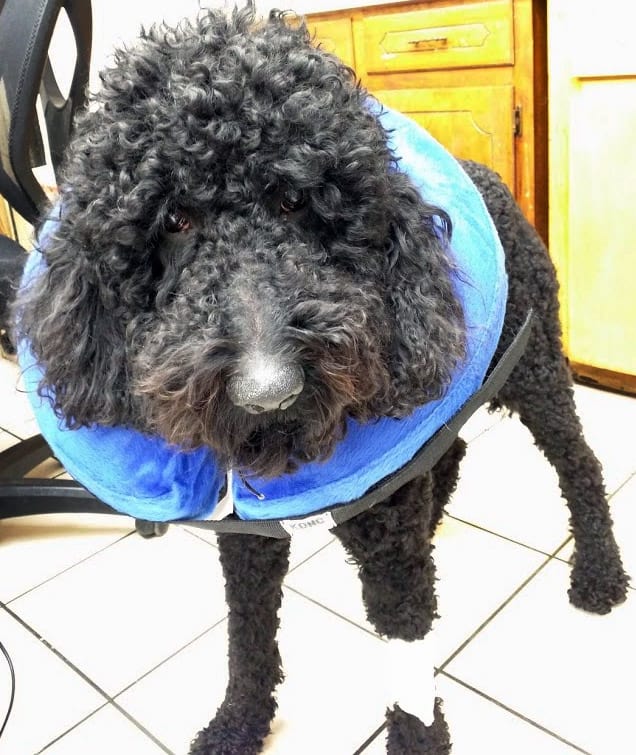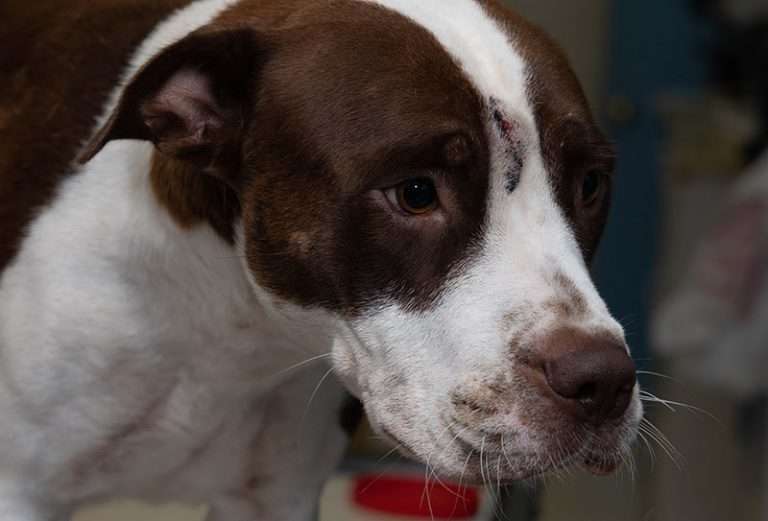Maverick’s Visit for a Stomach Tack
Bloat is a life-threatening condition, predominantly in large and giant breed dogs, that requires immediate veterinary attention.
Although the causes of this disease are not fully understood, there are many risk factors which can be avoided. In addition, you should be aware of the symptoms of bloat, so that you can get your dog life-saving veterinary attention as soon as possible.
What is bloat in dogs?
The technical term for this condition is gastric dilatation and volvulus (GDV). This term means enlargement of the stomach and subsequent rotation or flipping of the stomach on its axis.
As the term implies, the stomach first becomes abnormally distended with gas, liquid, and/or food.
If the stomach becomes distended beyond a critical point, then it rotates on its axis, blocking the exit point into the small intestine. This causes even more gas and fluid to accumulate in the already distended stomach.
Additionally, the stomach’s blood supply gets cut off, so the wall of the stomach does not receive oxygen and other nutrients. Not only is this condition very painful, but a dog with GDV will die within a matter of hours without emergency veterinary care.
What are the risk factors for bloat?
Although bloat can occur in any sized dog, it is much more common in large and giant breed dogs. Specifically, deep-chested breeds are at greatest risk, such as Great Danes, Mastiffs, St. Bernards, German Shepherds, Boxers, Standard Poodles and Dobermans, to name a few.
Some statistics suggest that dogs weighing greater than one hundred pounds have a 20% chance of bloat. Other risk factors include an aggressive or anxious personality type, age (highest incidence in dogs over 7 years of age), and eating one meal a day instead of multiple meals, or eating or drinking large amounts rapidly.
What are the signs of bloat in dogs?
The hallmark sign of bloat is unproductive vomiting. Your dog may act like he needs to vomit, but will retch without anything coming up other than a small amount of white foam. This is because when the stomach is overly distended or twisted, the valve to the stomach is blocked and the contents can not be vomited.
Because bloat is so painful, your dog will also show other signs of pain, such as panting, pacing or difficulty getting comfortable when lying down. If you notice these symptoms you should take your dog to your veterinarian immediately.
How is bloat treated?
Your veterinarian will confirm that your dog has bloat by doing a thorough examination and taking an x-ray to evaluate the stomach. Once bloat is confirmed, your veterinarian will try to stabilize your dog prior to doing emergency surgery.
Dogs with bloat are in shock and experiencing decreased blood perfusion to vital organs, so intravenous (IV) fluids are started immediately. Many dogs will also experience a potentially fatal heart arrhythmia, which will be closely monitored and treated if possible.
Surgery is done to flip the stomach back into its normal anatomic position, and also secure the stomach to the body wall in order to prevent it from flipping again. This procedure is called a gastropexy.
The mortality rate for this condition goes up significantly each hour the dog goes without treatment. Because this is such a time-sensitive condition, many veterinarians are now performing prophylactic or preventative gastropexy in high risk dogs. This procedure is very safe and effective when done in a healthy dog, and can be done at the time of spay or neuter in young dogs. The stomach is tacked down to the body wall so that it can not twist or flip on its axis.
Bloat is a very serious, life-threatening condition in dogs. There are many established risk factors, as well as clear symptoms to look for which indicate bloat and require immediate veterinary attention. Owners of high-risk dog breeds should talk with their veterinarian about prophylactic gastropexy in order to prevent bloat from occurring.


